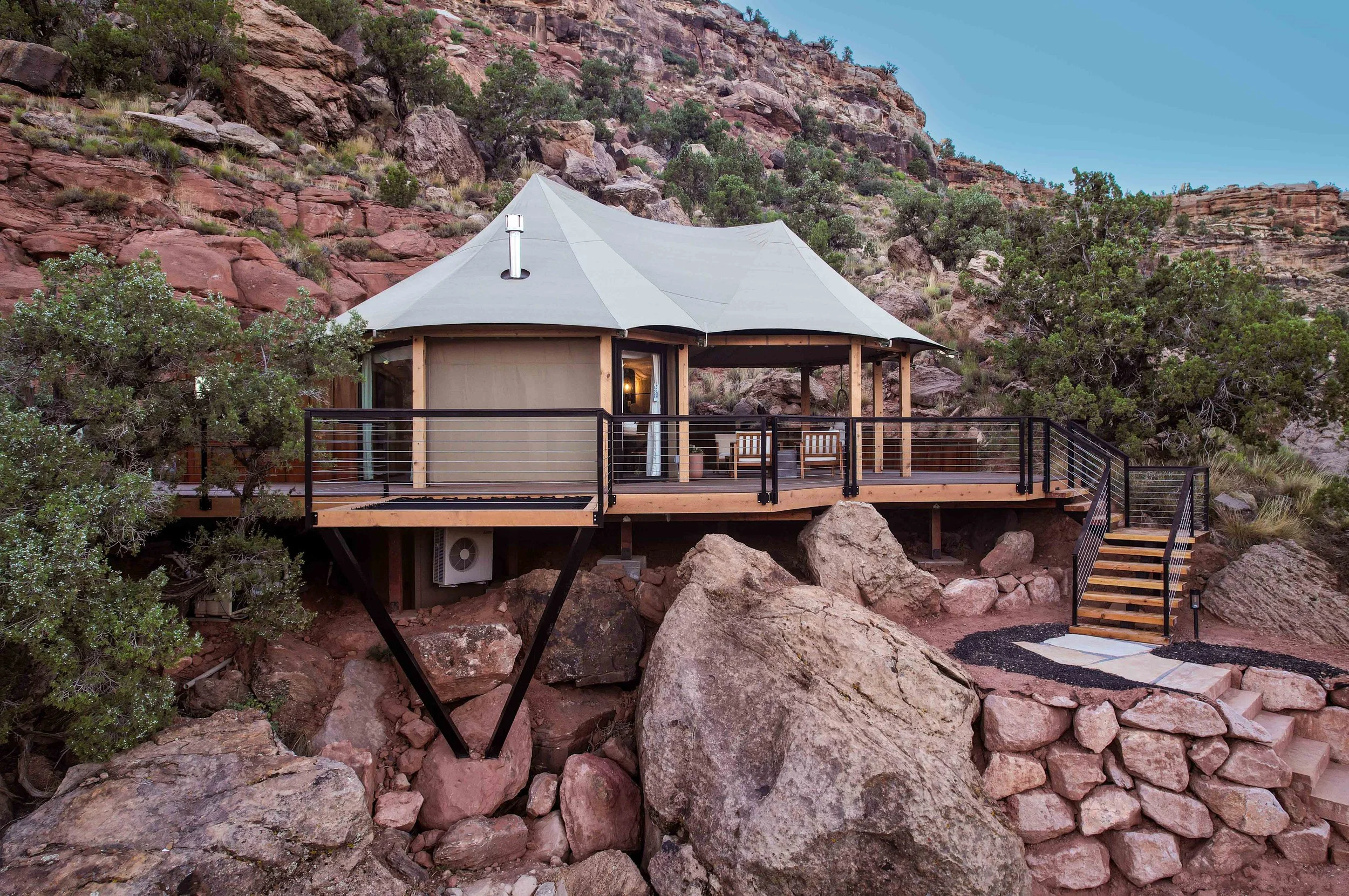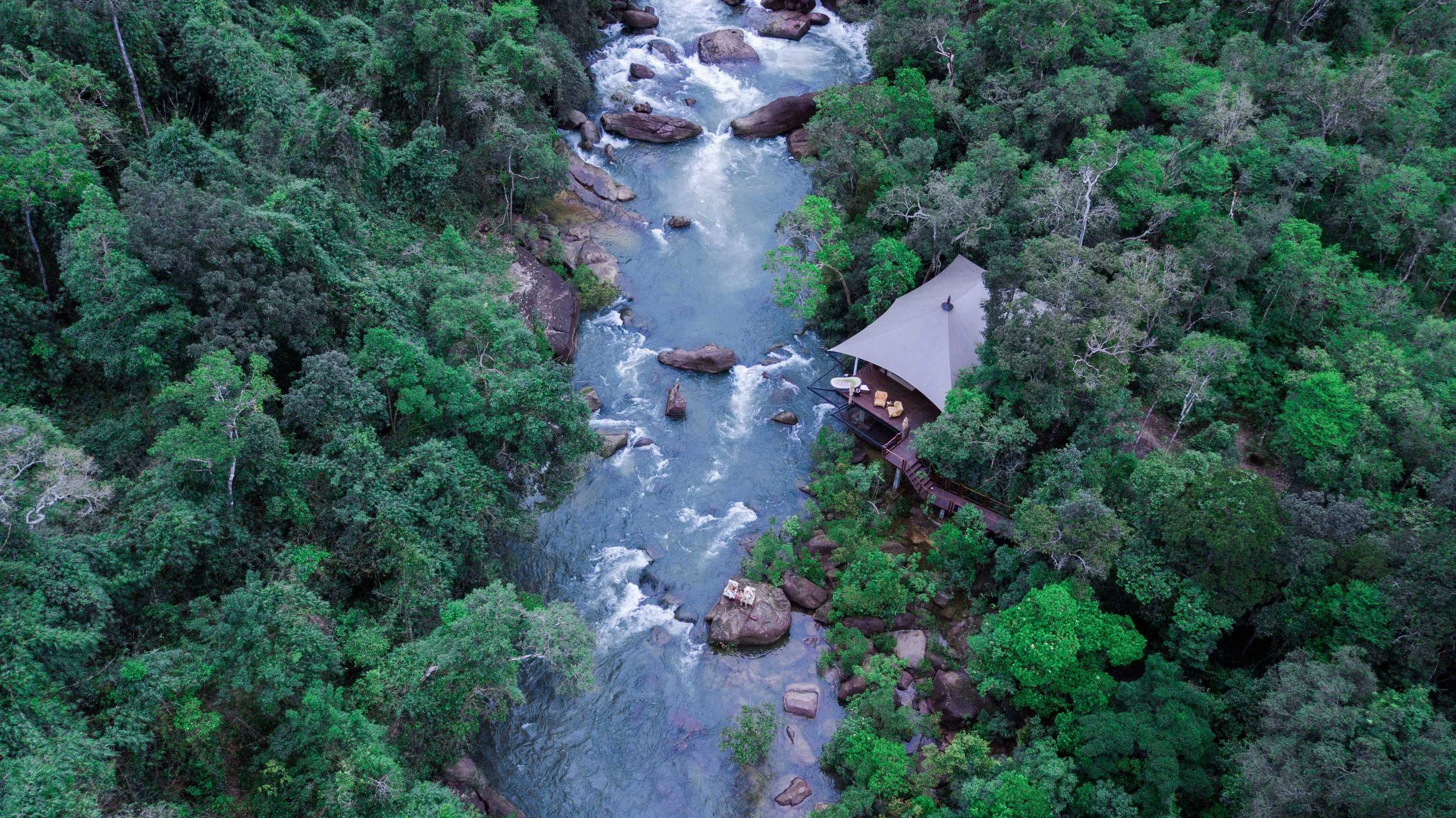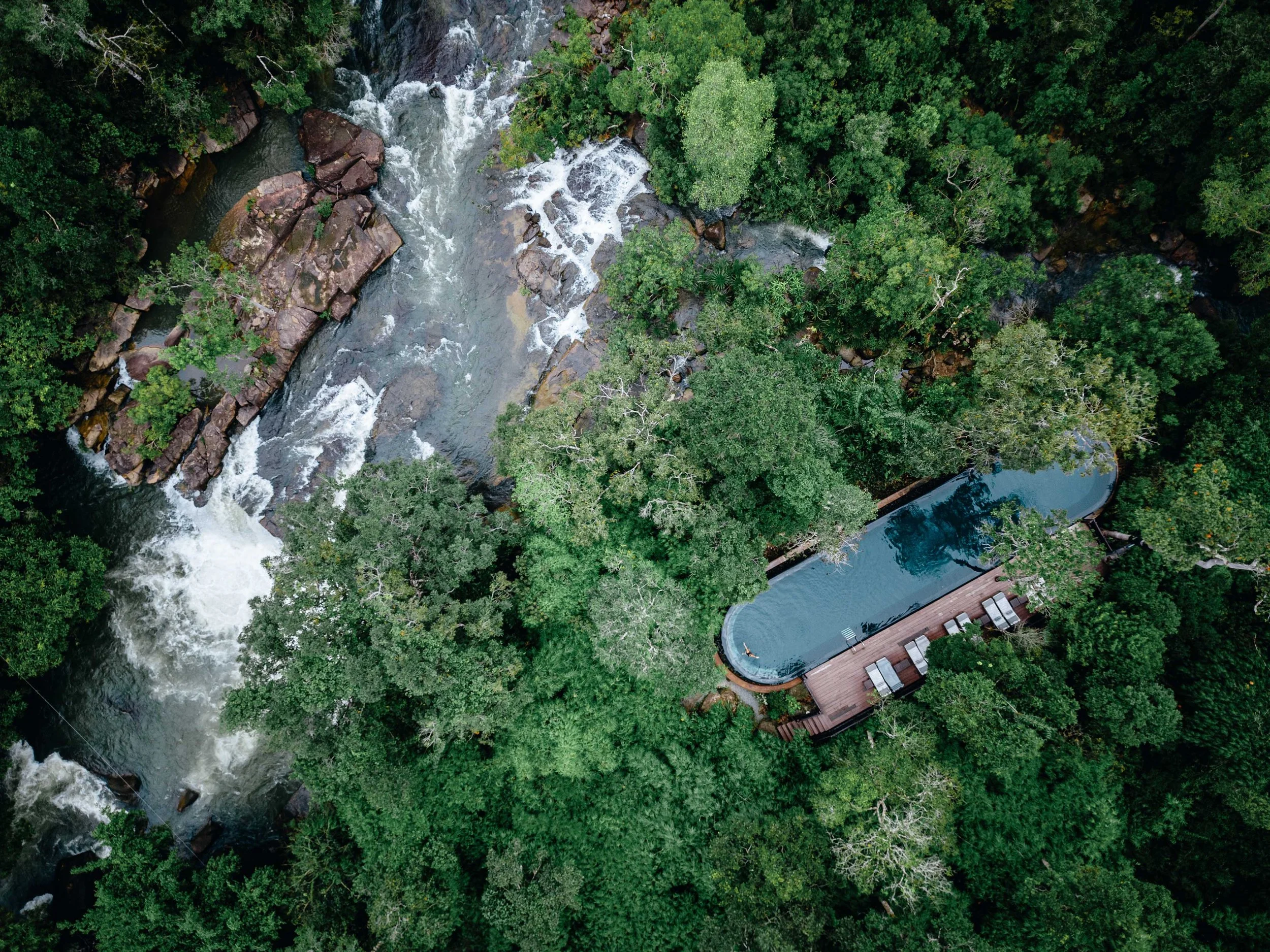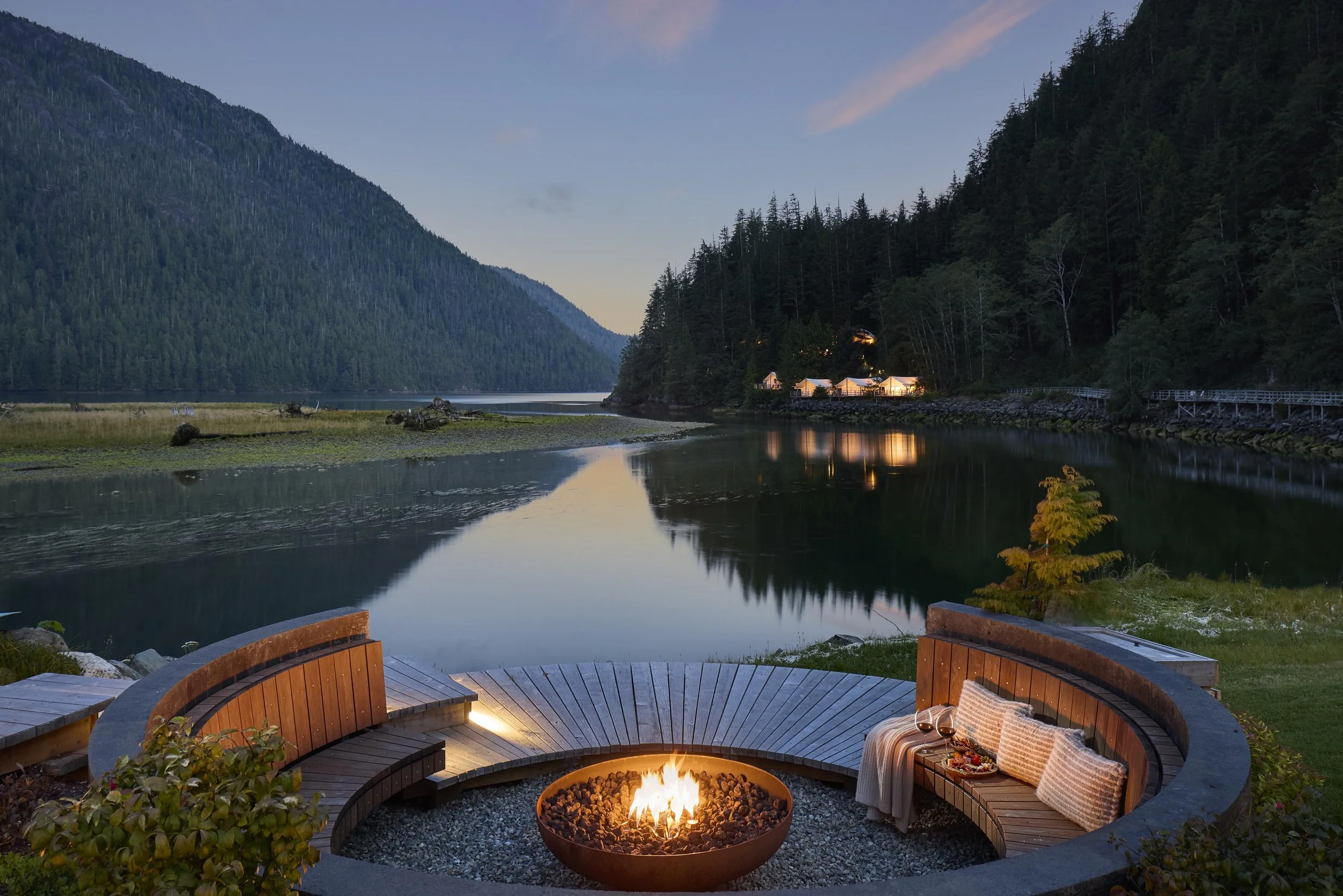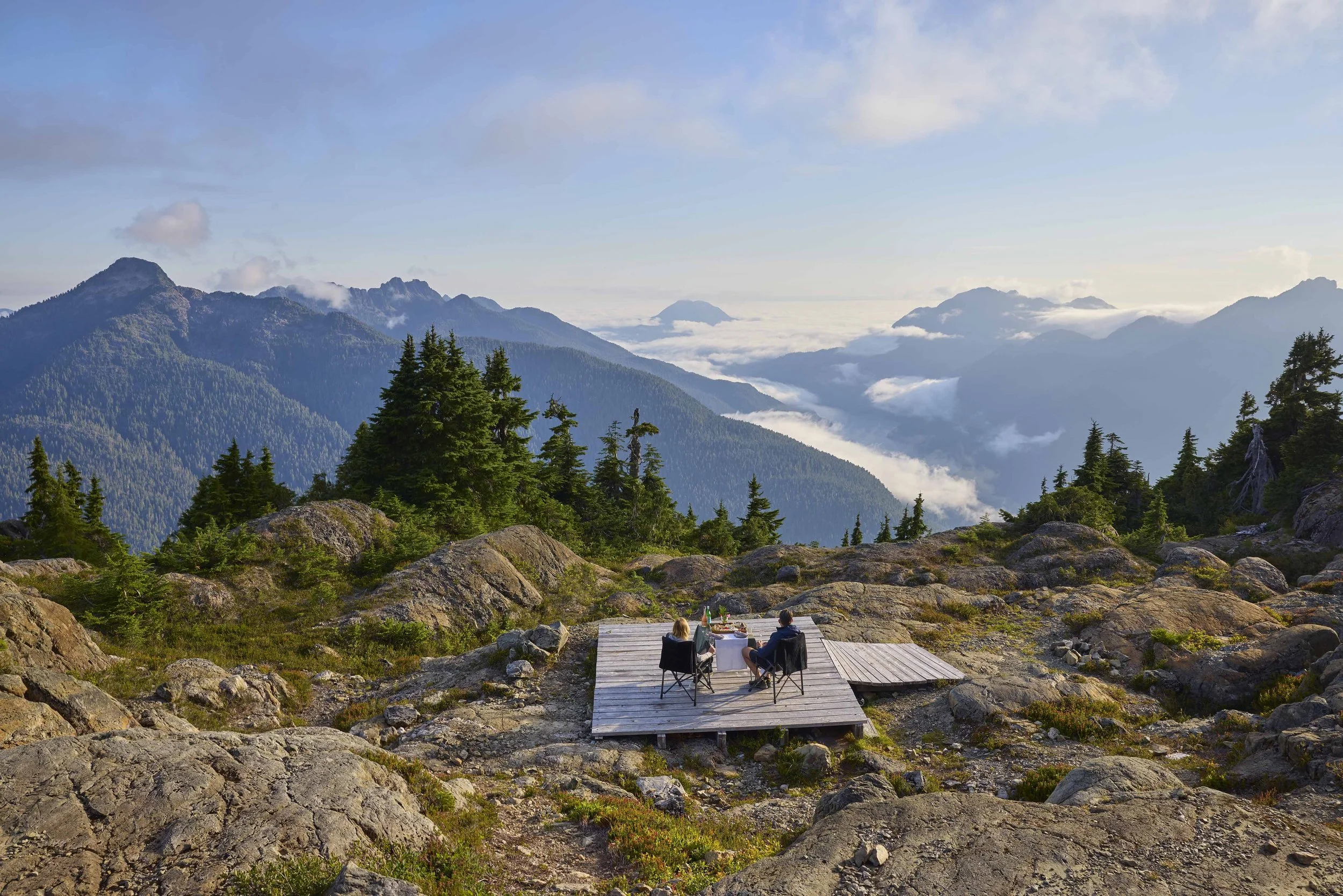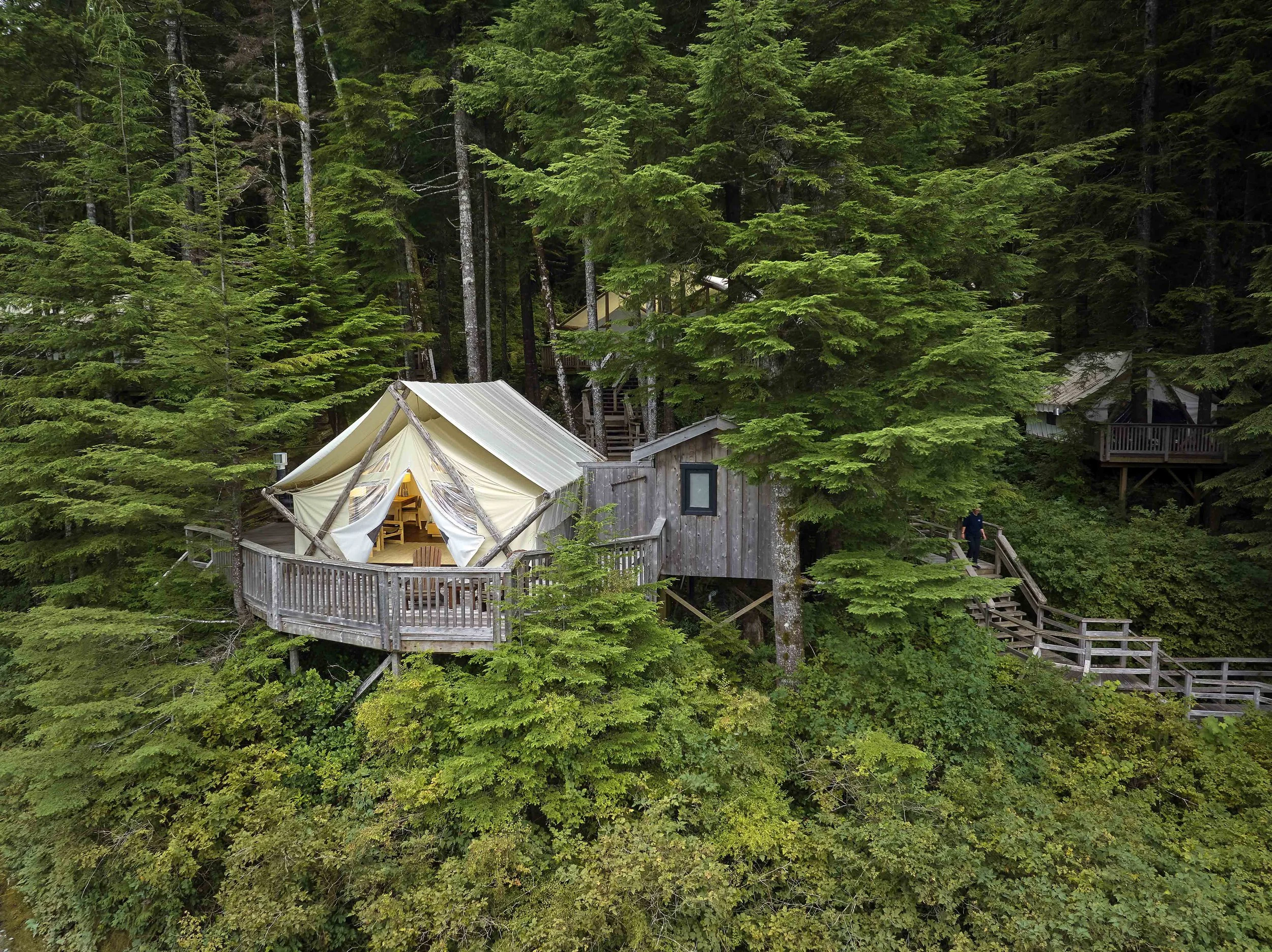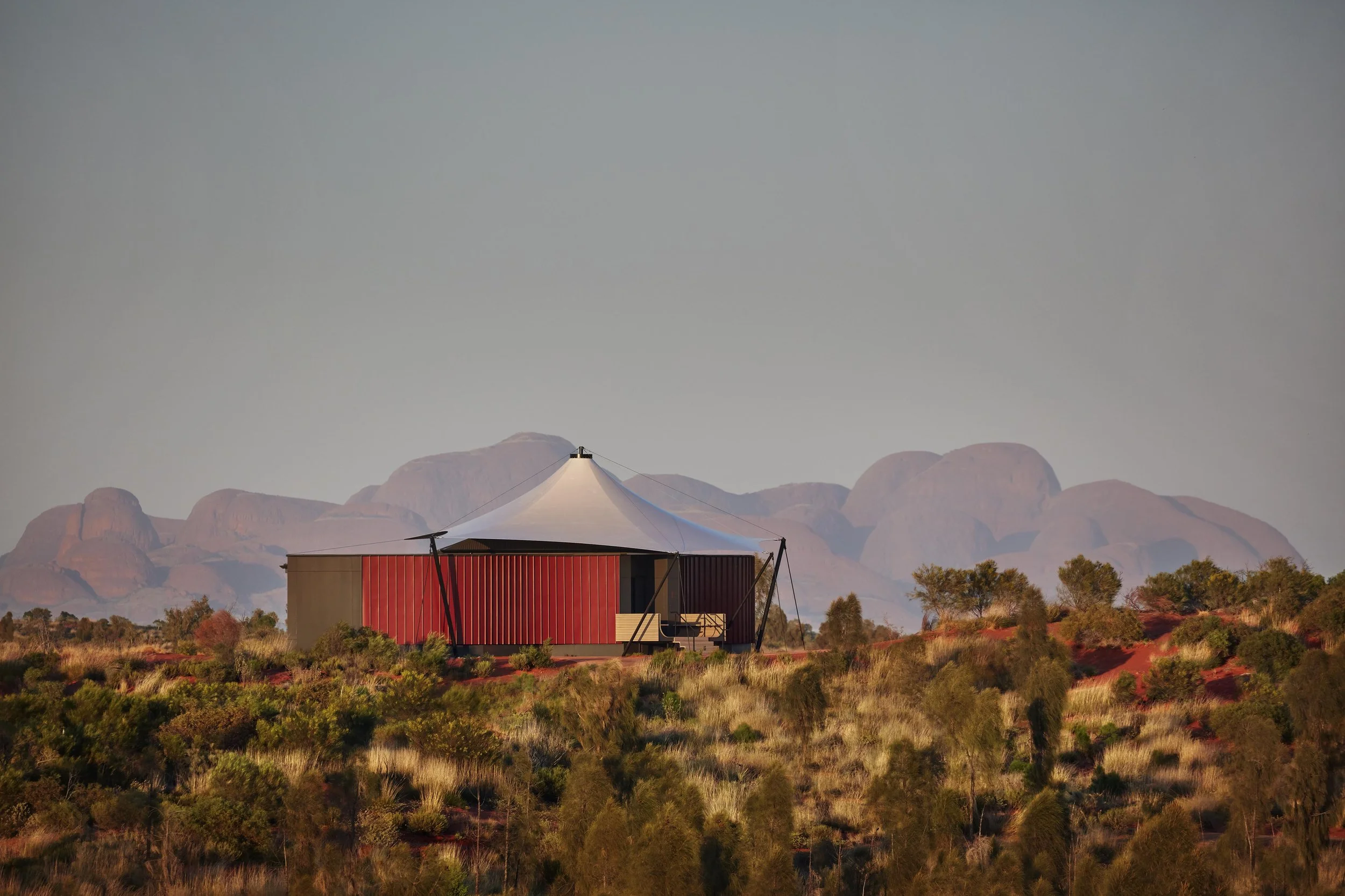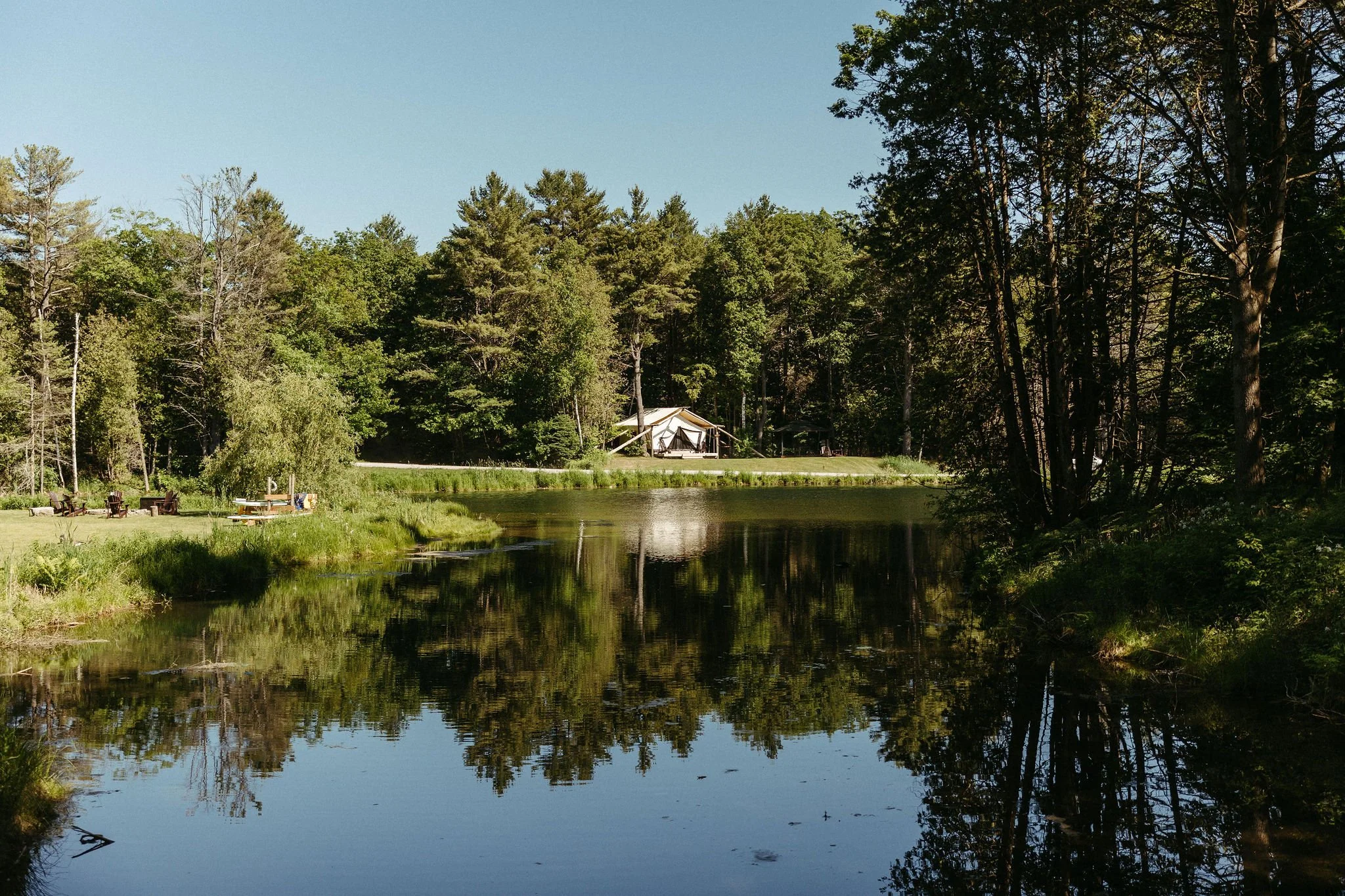How do you reach the unreachable? The corners of the earth where roads dissolve, where nature still speaks in its original voice? This is where glamping began - not as trend, but as necessity. To access the wildest places - deserts, jungles, mountaintops, and deep forests - you need shelter that travels lightly across the land.
Glamping became a way to go deeper, to stay longer, to feel the full presence of a landscape. In the world’s most remote national parks, tents rise among granite and wild grass offering comfort without conquest, and letting the land remain the main character.
Glamping architecture is a study in restraint. Structures are often modular, built off-site, then assembled without heavy machinery. Foundations float, frames breathe, and materials like canvas, wood, wool, solar respond to the rhythms of weather and place. It’s about meaningful comfort, designed to heighten your awareness of the elements, not shield you from them. Sustainability comes from this respect; using what the land offers, leaving no trace behind. It’s shelter as homage. At its best, glamping is a philosophy: build less, feel more, and let the land do the talking.
Open Sky Zion is a masterclass in this philosophy, set just outside Utah’s Zion National Park, where red cliffs rise like cathedrals and silence becomes the truest luxury. Here, safari-style tents sit on raised platforms that barely graze the land, offering panoramic views of the desert without competing with it. At night, the Milky Way spills across the sky in high definition, while by day, you’re minutes from canyons carved over eons. Solar power, low-impact materials, and a commitment to local stewardship allow you to rest easy, knowing the experience leaves the land as wild as it was found.
Shinta Mani Wild
Photos by Shinta Mani Wild
Photos by Shinta Mani Wild
In the dense jungles of Cambodia, Shinta Mani Wild redefines glamping as radical conservation. Accessible only by a jungle zipline (yes, really), this private nature sanctuary lies within a wildlife corridor between three national parks. Tents here are more like safari-era reveries - canvas, copper, and Cambodian hardwoods suspended above rushing rivers. But behind the romance is purpose: every stay helps fund anti-poaching patrols and forest protection, led by a full-time wildlife alliance team. Built without bulldozers, every tent was positioned to avoid trees, and every experience is a love letter to the land.
On the wild west coast of Vancouver Island, Clayoquot Wilderness Lodge is where raw Pacific forest meets refined, canvas-clad serenity. Accessible only by seaplane or boat, it’s cradled between towering trees, rushing rivers, and the misty rhythms of Clayoquot Sound. The lodge partners with the Ahousaht First Nation and contributes to salmon restoration and watershed research, weaving conservation into every guest experience. Tents are furnished with antique-style pieces and sit atop wooden decks raised to protect root systems and allow wildlife to pass beneath.
In the heart of Australia’s Red Centre, Longitude 131° offers a front-row seat to Uluru, where each tented pavilion is angled precisely to honor the sacred rock’s presence. Built on stilts with minimal environmental footprint, the lodge was designed to be removable, leaving no trace on this ancient, spiritually rich landscape. Even the design choices, from Indigenous artwork to local materials, reflect a philosophy of cultural reverence. Days are spent exploring with Anangu guides, learning not just about the land, but how to listen to it.
Photos by Canvas & Orchids Retreat
Canvas & Orchids Retreat floats on the quiet waters of Cambodia’s Tatai River, where the jungle meets the delta and the horizon softens into mist. Originally a sustainable eco-lodge, it pioneered the concept of floating glamping, with canvas tents gently bobbing on anchored platforms. Here, your room sways with the tide, and mornings begin with birdsong and the distant hush of waterfalls. Solar panels power the retreat, greywater is filtered through wetlands, and the surrounding mangroves act as both view and guardian. In a region threatened by deforestation, Canvas & Orchids is proof that light-footed architecture can offer both presence and protection.
Back in North America, Whispering Springs Wilderness Retreat in Ontario brings glamping closer to home—but no less connected to the wild. Surrounded by old-growth forest and rolling meadows, its canvas tents and forest yurts offer an elevated but grounded experience of Canada’s boreal beauty. Family-run and deeply rooted in the land, the retreat prioritizes regenerative practices: composting toilets, eco-friendly products, pollinator gardens, and land stewardship programs that educate and engage.
Room + Wild is the world's first and leading collective and platform for landscape-enhanced accommodation, ecotourism, nature-based destinations, and sustainable luxury travel experiences. We consistently inspire, influence, and spread awareness through our tailored travel guides, curated media content/channels, brand activations, press trips as well as visual and narrative storytelling.


